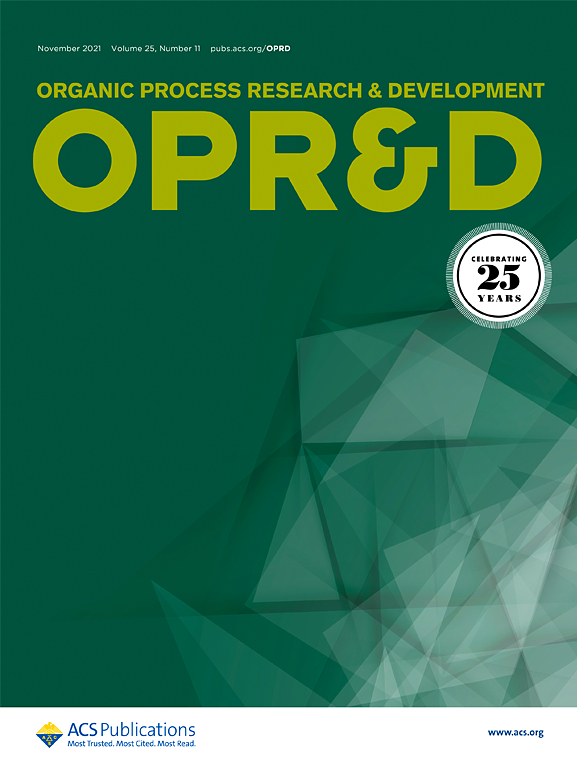Preparation of Impurity-Spiked Good Laboratory Practice Toxicological Batches of Active Pharmaceutical Ingredient Using Resonant Acoustic Mixing
IF 3.5
3区 化学
Q2 CHEMISTRY, APPLIED
Organic Process Research & Development
Pub Date : 2025-05-03
DOI:10.1021/acs.oprd.5c0006910.1021/acs.oprd.5c00069
引用次数: 0
Abstract
Gilead process chemistry has recently started to employ resonant acoustic mixing (RAM) technology to produce impurity-spiked good laboratory practice (GLP) toxicology batches of active pharmaceutical ingredient (API). When compared to other methods of generating impurity-spiked API, the benefits of this process are operational simplicity and reproducibility, solvent-free mixing and homogenization, ability to maintain the crystalline form of the API, and minimization of occupational exposure to powdered API. In this work, we describe a typical RAM process used to generate a GLP toxicology batch of API, including starting point instrument settings and the use of ceramic beads to homogenize material.

用共振声混合法制备掺有杂质的良好实验室操作规范的原料药毒理学批
吉利德工艺化学最近开始采用共振声学混合(RAM)技术来生产含有杂质的良好实验室规范(GLP)毒理学批次的活性药物成分(API)。与其他生产含杂质原料药的方法相比,该工艺的优点是操作简单,重现性好,无溶剂混合和均质化,能够保持原料药的结晶形式,并最大限度地减少职业接触粉状原料药。在这项工作中,我们描述了一个典型的RAM过程,用于生成GLP毒理学API批次,包括起始点仪器设置和使用陶瓷珠来均质材料。
本文章由计算机程序翻译,如有差异,请以英文原文为准。
求助全文
约1分钟内获得全文
求助全文
来源期刊
CiteScore
6.90
自引率
14.70%
发文量
251
审稿时长
2 months
期刊介绍:
The journal Organic Process Research & Development serves as a communication tool between industrial chemists and chemists working in universities and research institutes. As such, it reports original work from the broad field of industrial process chemistry but also presents academic results that are relevant, or potentially relevant, to industrial applications. Process chemistry is the science that enables the safe, environmentally benign and ultimately economical manufacturing of organic compounds that are required in larger amounts to help address the needs of society. Consequently, the Journal encompasses every aspect of organic chemistry, including all aspects of catalysis, synthetic methodology development and synthetic strategy exploration, but also includes aspects from analytical and solid-state chemistry and chemical engineering, such as work-up tools,process safety, or flow-chemistry. The goal of development and optimization of chemical reactions and processes is their transfer to a larger scale; original work describing such studies and the actual implementation on scale is highly relevant to the journal. However, studies on new developments from either industry, research institutes or academia that have not yet been demonstrated on scale, but where an industrial utility can be expected and where the study has addressed important prerequisites for a scale-up and has given confidence into the reliability and practicality of the chemistry, also serve the mission of OPR&D as a communication tool between the different contributors to the field.

 求助内容:
求助内容: 应助结果提醒方式:
应助结果提醒方式:


